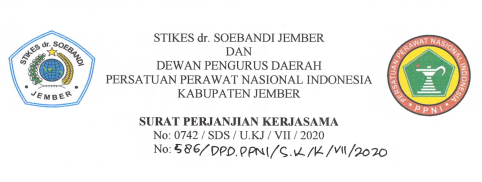HUMAN RESOURCES PLACEMENT POLICY AND ITS EFFECT ON WORK ACHIEVEMENT IN HEALTH SCIENCE SCHOOL dr. SOEBANDI DISTRICT JEMBER
Keywords:
Human resourceAbstract
Stick to the STIKES goals and mission dr. Soebandi, Jember Regency, it is natural that human resource management gets serious attention from the leadership of STIKES. Moreover, the human element is also the key to success in providing maximum service and satisfaction to the company and the society. This can be seen in policy programs relating to human resource management, STIKES employees, dr. Soebandi, Jember Regency. The placement aspect of employees in filling positions in STIKES dr. Soebandi, Jember Regency is the main thing too. This is closely related to the performance of employees (preformance) in providing the best service to students and the people who need help.
The development of the government apparatus is also directed at improving the quality, efficiency, and effectiveness of all STIKES administrative structures, dr. Soebandi, Jember Regency, including capacity building, discipline, devotion, role models and the welfare of its officials so that as a whole are increasingly able to carry out tasks in STIKES dr. Soebandi, Jember Regency as well as possible.
This study uses a Likert scale, a sample of 20 STIKES employees dr. Soebandi, Jember Regency. The variables used are knowledge suitability (X1), attitude suitability (X2), skill suitability (X3) and work performance (Y). To find out how much influence the independent variable has on work performance, multiple linear regression analysis is used. The multiple linear regression analysis technique used is the F test to simultaneously test the effect of independent variables on the dependent variable and the t test to find out which independent variables have the greatest effect on the dependent variable. besides that classic test assumptions are also used.
The results of the analysis found that the calculated F value of 19.7752 with a significance level of less than 5%, so that the suitability of knowledge (X1), suitability of attitude (X2), suitability of skills (X3) and work performance (Y). The simultaneous influence of all independent variables on work performance was 78.76%. Partially, each independent variable significantly influences work performance. The dominant influence in this study is the attitude suitability variable (X3) to work performance by 76.17%. This study did not violate the classical multicollinear assumptions and heteroscedasticity assumptions





